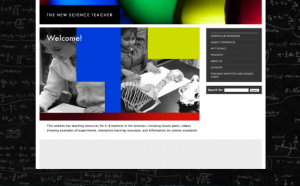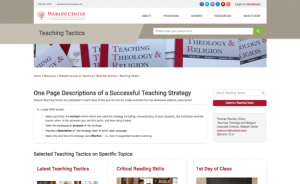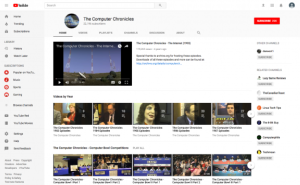 |
September 1, 2017 Volume 23, Number 35 |
Research and Education |
General Interest |
Network Tools |
In the News |
Research and EducationBack to Top | |
 |
|
 |
|
 |
|
 |
|
 |
|
 |
|
 |
|
 |
|
General InterestBack to Top | |
 |
|
 |
|
 |
|
 |
|
 |
|
 |
|
 |
|
Network ToolsBack to Top | |
 |
|
 |
|
In the NewsBack to Top | |
Centuries Later, Researchers Locate the Star Behind a 1437 Nova | |
|
Found: A star that last dazzled astronomers in 1437 Solving a 600-Year-Old Cosmic Mystery Casting Light on the Mystery of a Star that Vanished After 14 Days Proper- motion age dating of the progeny of Nova Scorpii AD 1437 YouTube: What is a Nova? How Does it Compare to a Supernova? Digitizing the Harvard Observatory Plate Collection On March 11, 1437 CE, a group of astronomers living near what is today known as Seoul, Korea noticed something unusual: a star they had never seen before, appearing on the tail of the Scorpio constellation. The astronomers observed and recorded the presence of this unusual light for fourteen more days, before the light disappeared. On Aug. 30, a research team headed by Mark Shara of the American Museum of Natural History's department of astrophysics, published a paper in Nature identifying this star and describing how it was briefly made visible 580 years ago thanks to a classical nova. Not to be confused with supernovae, classical novae occur when a white dwarf star in a binary star system absorbs hydrogen from a companion red dwarf star. This absorbed hydrogen causes the white dwarf star to explode, sometimes making the star briefly visible to stargazers on earth. Shara has been in search of this star since 1986, with the hopes of uncovering new clues about these binary star systems that produce novaes. His research was recently aided when the Harvard College Observatory digitized its collection of glass-plated astronomical images, allowing Shara to expand his search and, eventually, find images of this star during the twentieth century. Shara noted "If huge databases had existed [when I started this research], I would have unraveled it right then and there. It was only because of this ability to check something like a million astronomical papers and books and many petabytes of images, all within a few minutes, and correlate things with each other that I was able to find this." [MMB] The first three links take readers to helpful summaries of this new research, authored by Mary Beth Griggs at Popular Science, Marina Koren of The Atlantic, and Kenneth Chang of The New York Times. Those interested in reading the original research in full may do so via the fourth link. Next, the fifth link takes readers to a helpful video from Fraiser Cain that explains the difference between classical novae and supernovae and the science behind these phenomena. Finally, the last link takes visitors to a presentation created by Harvard that outlines its recent initiative to digitized its astronomical photographic plate collection, a project that was crucial to this recent research. This presentation outlines the role of these images in astronomical research between 1890 and 1980, providing insight into the history of astronomy. | |





